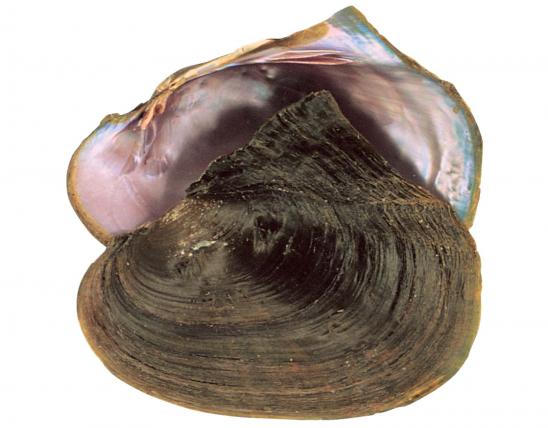
Shell is thin, compressed, oval to rectangular with a large dorsal wing. Umbo is not raised above hinge line. Epidermis is shiny, light tan to olive-brown, becomes darker brown with age; light tan juveniles may have a greenish cast; without rays. Inside shell beak cavity is shallow; pseudocardinal teeth thin, small and erect; lateral teeth thin, blade-like and slightly curved; nacre (lining) light purple.
Similar species: Pink heelsplitter has a darker, thicker shell with a deep purple nacre and larger pseudocardinal teeth. Fragile papershell is light yellow with a darker area near the umbo and whitish to whitish-blue nacre, possibly with a pink tinge.
Adult length: 3-6 inches.

Generally statewide; most common in Gasconade, Osage, Grand, Chariton, Lamine, North Fabius and Salt rivers; uncommon where found.
Habitat and Conservation
Shallow areas of medium to large rivers with slow current in silt, mud or sand.
Food
Algae and fine particles of decaying organic matter; extracts nutrients and oxygen from water drawn into the body cavity through a specialized gill called the incurrent siphon; sediment and undigested waste are expelled through the excurrent siphon.
Status
Uncommon.
Life Cycle
Males release sperm directly into water. Females downstream siphon sperm into the gill chamber, where eggs are fertilized. Eggs mature into larvae (called glochidia), which discharge into the water and attach to host fish—in this species, the freshwater drum and white crappie. The tiny mussel eventually breaks away and floats to the bottom of the stream, and the cycle repeats.
Human Connections
Mussels are excellent biological indicators of water quality because they are long-lived and relatively immobile, accumulating contaminants in water that can be scientifically analyzed. Because of its relatively thin shell, this species has had little commercial use.
Ecosystem Connections
Mussels act as nature's “vacuum cleaners,” filtering and cleansing polluted waters. They are also an important food source for other species in the aquatic environment.

























